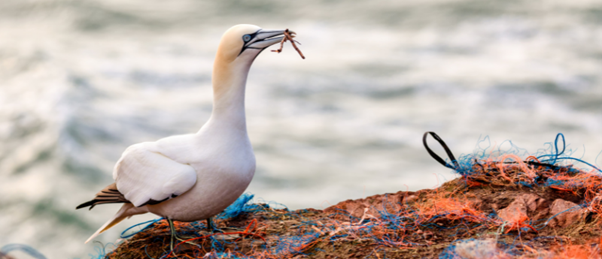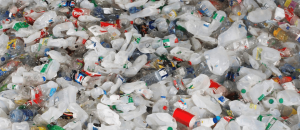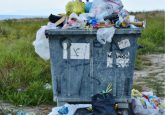Seabirds fooled by plastic pollution

Seabirds from 16 locations around the world have been found to consume plastic and have accumulated plastic’s chemical components in their bodies.
Each year, 380 million tons of plastic are produced globally and of that plastic, approximately 10 million tons end up in the ocean. This plastic pollution severely impacts marine life, causing an estimated 1 million deaths in marine animals each year. Plastic affects animals in a variety of ways, from trapping turtles in nets to causing abdominal issues in sperm whales, and now, a new study has found that from a sample of 32 seabirds, up to 52% ate plastic and accumulated plastic’s chemical components in their bodies. The research, a collaborative effort of 18 institutions from seven countries around the globe but led by Tokyo University of Agriculture and Technology (Japan), details yet another negative impact that the mass production of plastic has on the planet.
Plastic that floats on the sea’s surface and litters beaches is broken down into smaller fragments by UV radiation from the sun. These fragments can float and move with the currents and are a similar size to the seabirds’ natural prey of small fish and insects.
“Consequently, huge amounts of plastics are available to a suite of consumers in the world’s oceans,” corresponding author Hideshige Takada (Tokyo University of Agriculture and Technology) commented. “As of 2020, 180 species of seabirds, corresponding to half of the total species of seabirds around the globe, have been reported to have ingested plastics. It has also been predicted that by 2050, 99% of seabird species will have ingested plastics.”
 Nanoplastics detected in human tissues trigger health concerns
Nanoplastics detected in human tissues trigger health concerns
Micro- and nanoplastics have been found in animals, where they have been ingested. Now, researchers have shared work on the discovery of micro- and nanoplastics in human organs and tissues.
While ingesting plastic can cause physical damage, such as bowel obstructions and intestinal perforations, and be a direct cause of seabird death, little is known about the effect that chemical components of plastic can have on seabirds.
“It was believed that additives are not easily available for leaching or accumulation in biological tissues as they are kneaded into the polymer matrix during plastic production,” Takada explained. “However, it has been demonstrated that oily components in digestive fluids can act as organic solvents to facilitate additive leaching.”
The researchers took samples of oil from the preen gland, also known as the uropygial gland, of 198 seabirds in 16 locations around the world, including 54 bird carcasses. Analyzing the chemical concentrations in this oil can provide information on the contaminant burden of the bird’s internal fat stores. They found that decabromodiphenyl ether and decabromo diphenyl ethane had accumulated in 16 of the birds, and benzotriazole UV stabilizers accumulated in 67.
“High concentrations of additives were detected in seabirds that also contained large, ingested plastic loads,” Takada concluded. “The detection additives demonstrated that significant portions of the world’s seabirds — 10 to 30% — are likely the [sic] accumulate chemicals directly from ingesting plastics, but the health consequences of this are not fully understood.”
In future projects, the researchers plan to study the biological effects that the accumulated plastic additives have in seabirds.
